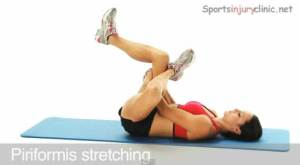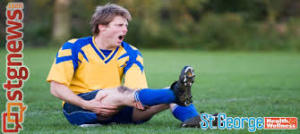Gentle Reader,
I will tell you what the first barrier of resistance is not. We move right through it in our typical stretches prior to a walk, run, bike or hike.
You are stretching. You put your foot on the lower rail of the fence, leg at full extension and you lean forward to reach for your toes. You push your calf into submission. Hold a few seconds, maybe count to 30. Switch. 
The run is over. In the night, a Charlie horse makes wakes you screaming for mercy. You grab your calf, knuckles bouncing off the rock solid knot. You think, Did that stretching do any good at all?
Your lower back is cranky. To get relief you lie down on the mat, swing one ankle over the other standing leg, grab your thigh and pull the bent leg in, feeling it in the T-band running down the crossed leg, thigh and  into the butt. Your hip still screams when yet another set of stairs appears on the trail to Snow Lake. What good was that stretch, really?
into the butt. Your hip still screams when yet another set of stairs appears on the trail to Snow Lake. What good was that stretch, really?
Thinking you have been helping yourself all these years with these classic stretches, you feel despair. At the next appointment with the Myofascial Release therapist, you ask what you might try that could be a more effect method of self-care.

The first barrier of resistance. Feel for it. Stop there and hang out.
You have no idea what this feels like even though you have had a dozen treatments which have reshaped your body and given you far more flexibility than you have had in 40 years. You get on the floor together. You sit, legs out-stretched, leaning back on your arms, stiff behind you. You slowly point your toes. The pain up the T-band involving the Sciatica begins immediately. The toes barely push toward the floor. In perceptively pointed. You hold right there, listening to the body, applying a tiny bit of pressure with the toes, just short of inducing pain. After about 2 minutes, there is a release, a melting of fascia and you can point the toes a little further toward the floor before the next “first barrier of resistance” engages.
(If you explore myofascial release videos, they all present poses that are way past the first barrier of resistance for most of us over 50. Do not force yourself into a position. You will not be able to feel the resistance.)
Intolerable, you think. How can you bare to wait patiently for the fascia, that girdle of collagen that has formed an inner armor against too much fluid movement, to relax its hold? Not only is it boring but also it seems like such a tiny effort when you are used to big effort to overcome anything troubling. You find a meditation download and put on your head set. The small pressure against the first barrier of resistance becomes a mindfulness exercise, self-care on all levels. You decide to allow 24 minutes for this each morning. Stair climbing, hiking, sitting and walking are less painful. Amazing. It doesn’t take large lunges, pigeon pose, figure four ankle over bent knee.
Perhaps your neck and shoulder are your problem area. You ice, use a brace, put heat on the painful muscles and joints. You might give this self-care a try. Turn your head toward the pain and stop the minute the movement induces pain. Back off just a little and then lean gently into the pain producing position and hold. You will soon feel the fascia melt and you can move a little further until the next first barrier of resistance.
I was standing in line in Costco today and my shin and hip were bugging me. I found a comfortable standing position and moved slightly to produce this pain, then backed off just a little. I breathed into the pressure I was putting so gently on the leg. By the time I was summoned to the counter, the fascia had released and I walked without that discomfort. This is a self-care you can do sitting on a bus, at the movie or in a concert, at the dinner table or in a restaurant. Mindfully notice when pain lurks in your body. Shift so the pain lessens. Lean into the pain-producing position just to the first barrier of resistance, and hold. Deepen your breathing. Soon you will feel the relaxation of the tension that is causing the pain.
I searched the web to find videos and websites with hints for self-care. Everything I found was too far ahead of where my pain kicks in. You may find them helpful so I have included several for you to watch/read. They just left me more frustrated because I was working so hard to get into the position that my body tightened up and could not relax. I couldn’t find the first barrier of resistance. You may be less bound up than I have been.
I’d love to hear how this goes for you if you try it. Please send me any questions if I have not explained the simple self-care technique adequately.
Until next time,
Be well, Do well and Keep Moving,
Betsy
Shopping for supplements that help: www.HiHoHealth.com
Travel tips and tales: www.EmpoweredGrandma.com
